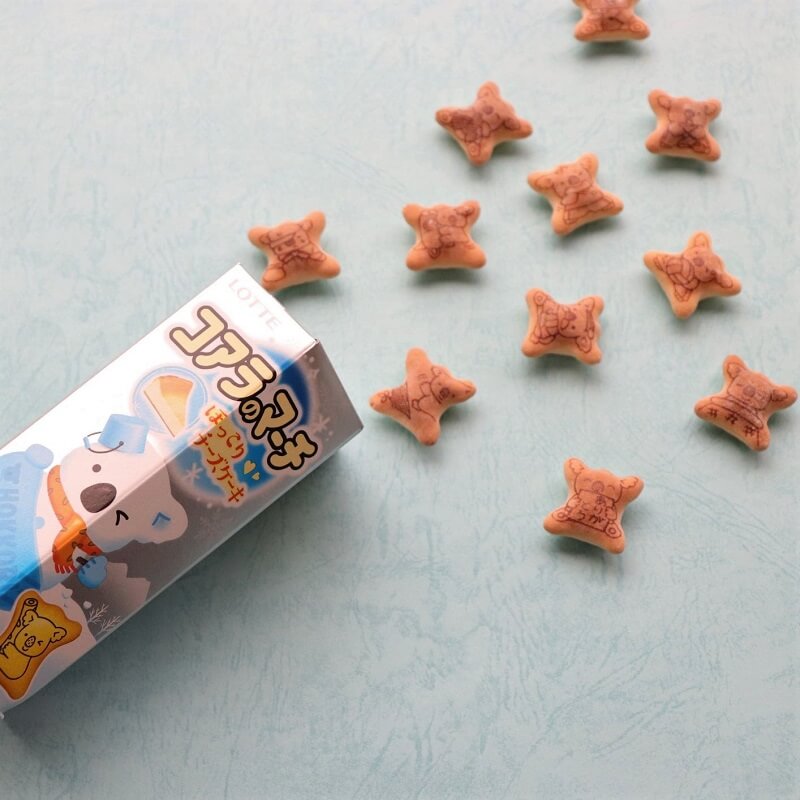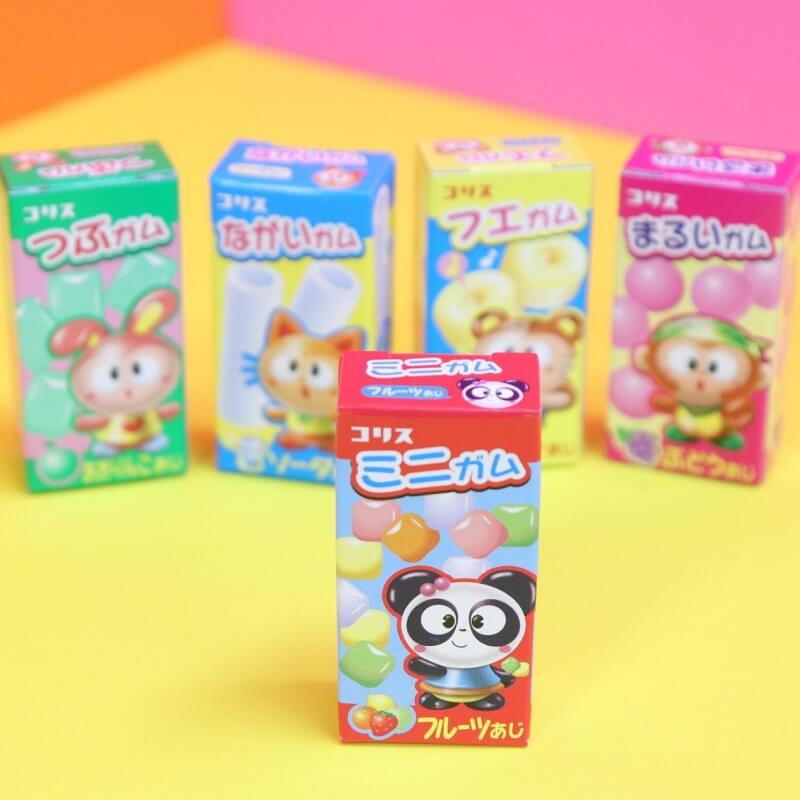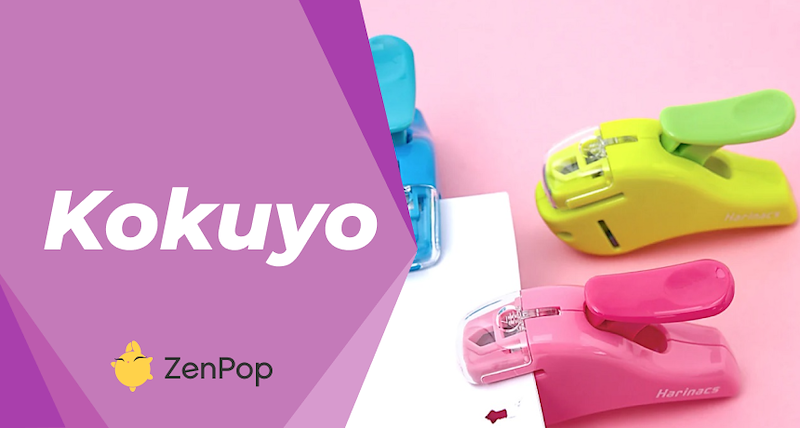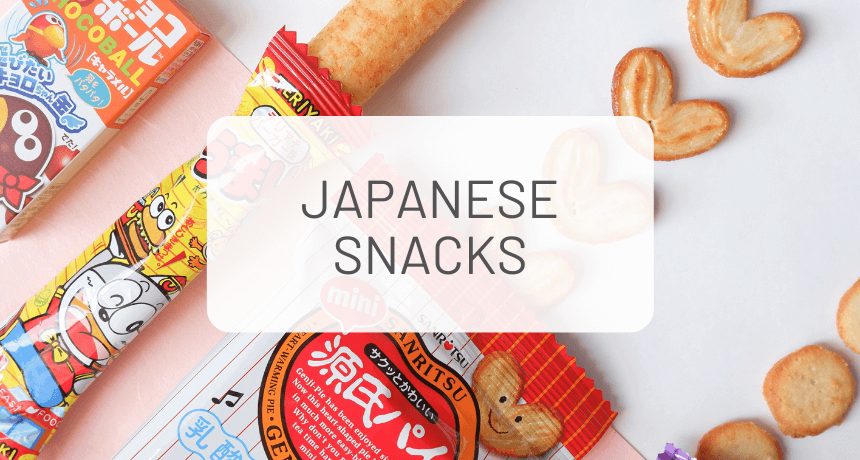
</title><meta name="robots" content="noindex">Japanese Snacks: The 2023 Ultimate Guide
You’ve seen, and tasted Japanese snacks (お菓子, okashi), in our ZenPop boxes, and to this day wonder where they all come from? How does Japan have such an endless supply of snacks and candies, with the most unexpected flavor combinations? Creativity, and a passion for details, that’s how. To navigate you through the hundreds of options out there, here’s our guide to help you choose your favorite!
Snacks in Japan fall into 2 distinct categories: Wagashi (和菓子), and non-wagashi. The former are old and traditional Japanese snacks whereas the latter are often influenced by snacks from overseas with a local twist: and those are the ones that will be showcased here.
Inside each of those categories, Japanese confectioneries have created a wide range of innovative snacks, and we’ve included them all in our packs. So without further ado, here is your ultimate guide to Japanese snacks you’ll find in ZenPop boxes: from senbei to hi-chews, Kit Kats and candies!
1. Kit Kats
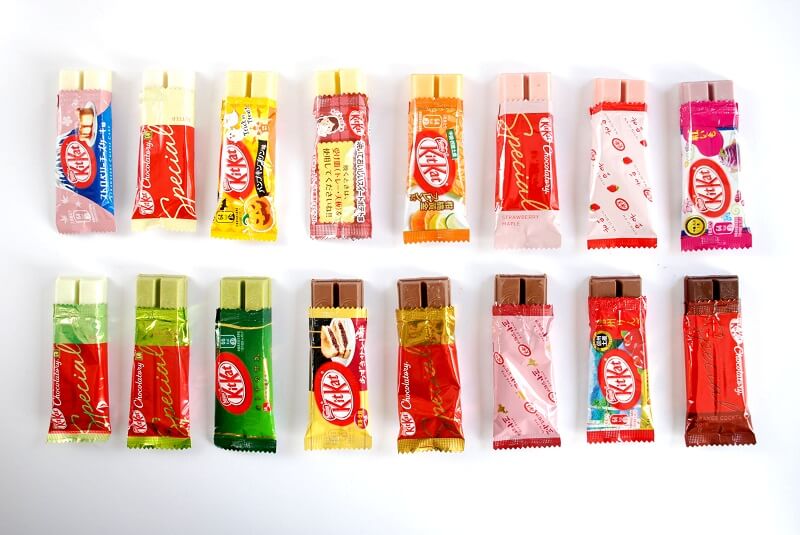
Source: omnomnomad
Originally from the UK, it took over 28 years before the beloved chocolate bar made it to Japan. But boy, did it have an impact! You’d nearly think the Japanese have invented the world famous bars, and you couldn’t be blamed for it. After all, they have developed about 350 delicious flavors! Can you believe that? 350!
Some of them can only be purchased in specific regions of Japan such as the kuro mitsu (black honey, from Kyoto), while others are seasonal like the sakura-flavored ones! There are many more surprising Kit Kat flavors out there: azuki bean, baked sweet potato, matcha, saké, shinshu apple and the list goes on and on and on.
Actually, the brand is now so strong in Japan, that it has led to some unthinkable collaborations: a Kit Kat bar where you can pair your Kit Kats with sushi! For real!
2. Pocky
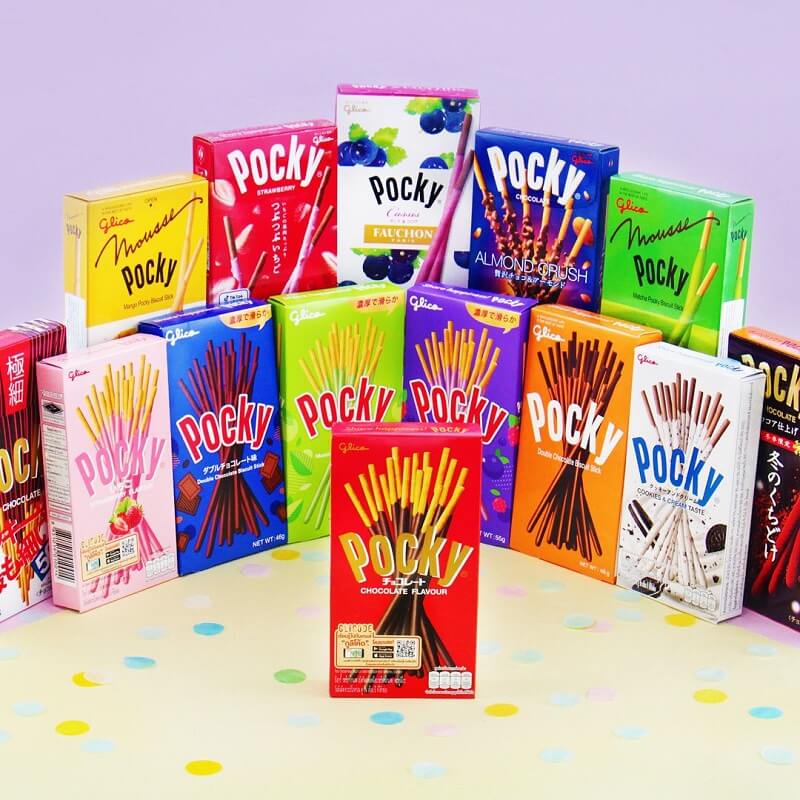
Source: unknown
Our local hero: the running Glico man. The company founded in Osaka first released Pocky in 1966. The goal was simple: be light, be convenient, be tasty. Triple P for the Pocky!
The name has a fun origin too, it comes from the onomatopoeic word pokkin (ポッキン) which is the sound a Pocky makes when you take a bite.
Just like Kit Kat: the product stays simple, but the innovation is in the flavors. There are over 50 of them now, and some special editions like Pocky Crush, Pocky G and Reverse Pocky. Some of the favorite flavors to snack on are the regional flavors such as Kobe Wine, Nagano Grape and Yubari Melon as well as Honey Pocky, Royal Milk Tea, and Mango flavors. Outside of Japan, Pocky is sometimes known under different names, such as Mikado in the UK or France!
3. Pretz
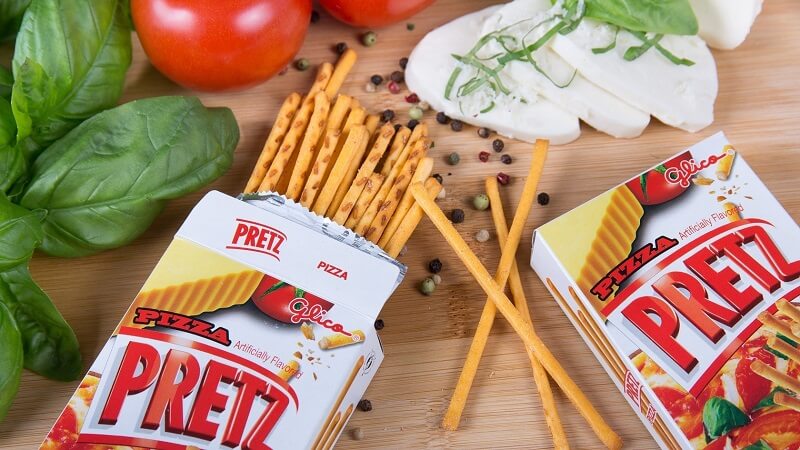
Source: Glico website
Pretz (プリッツ, Purittsu) is Pocky’s older brother. 4 years its senior, Pretz are pretzel sticks invented in 1962 by the same company that gifted us with Pocky. The main difference is that Pretz are sprinkled with seasoning, instead of dipped into a seasoning!
They come in 3 sizes: regular, kid’s, and giant. They come in many, many, many flavors, but it all started with the salad one. Salad followed by asparagus, scallop butter, french toast, egg pudding, basil, giant eel, and the list goes on and on and on, with some of the strangest and tastiest flavors you can imagine!
4. Dagashi
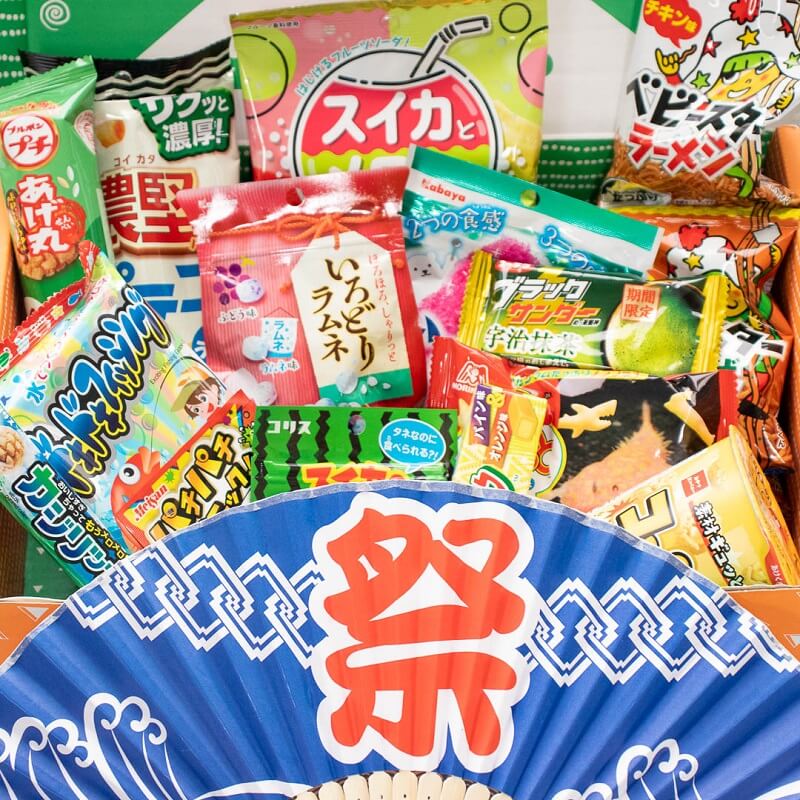
Source: ZenPop
Dagashi, no way around it! The name dagashi (駄菓子) comes from the two words ‘da’ for futile or negligible and ‘kashi’ for snacks. It dates back to the Edo period (1603-1867), and started with simple snacks like grains mixed with malt syrup. Meiji restoration, world wars, economic boom: and bam A few hundred years later we now have such snacks as Umaibo, Baby Star Ramen, Ramune candies and hundreds more!
There are still many traditional Dagashi stores you can find around both Tokyo and Japan, but if you want something a bit more interesting, why not try these Dagashi Bars! A modern way to enjoy an old classic!
5. Umaibo
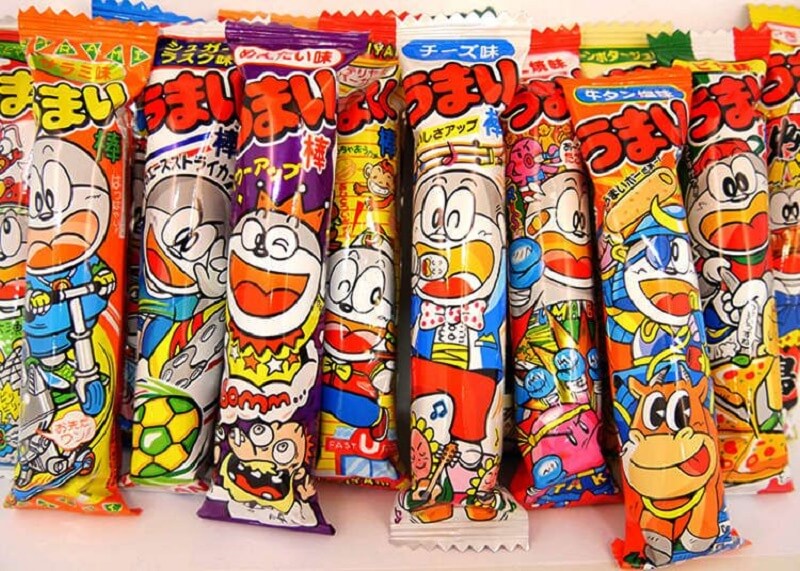
Source: unknown
Umaibo (うまい棒) or "delicious stick" is a form of dagashi and probably one of the most famous kinds too! In the stores since 1979, it has been a very affordable snack for kids, and for a lot of adults continues to be their go-to pocket treat!
It’s a puffed corn stick that is super easy to eat, with all kinds of flavors, like pizza or barbecue! They even have Takoyaki, Shrimp, or Natto! The mascot Umaemon was modeled and named after the popular Doraemon, as a funny copycat!
6. Konpeito
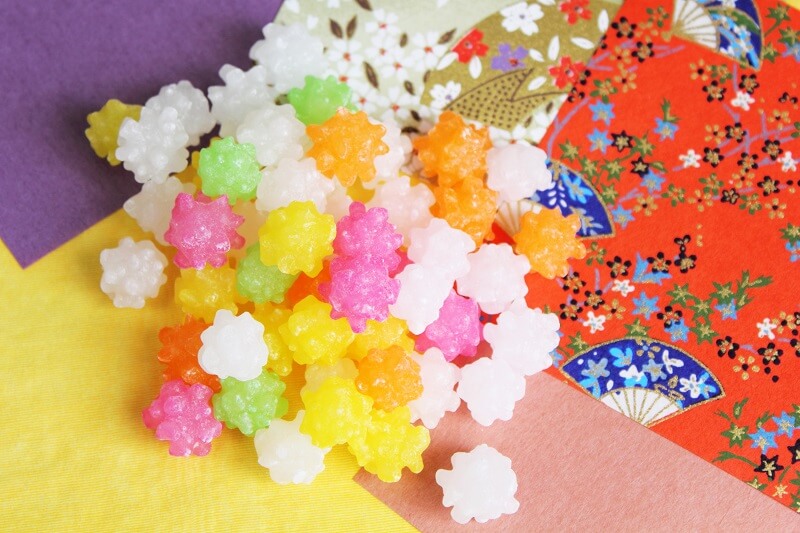
Source: Japan brand
Another classic in the realm of Japanese dagashi, (金平糖, コンペイトー). Some consider this to be the oldest dagashi in Japan, if that doesn’t make you want to try it? It’s a star-shaped candy that comes, drum-roll, in many flavors and colors.
Originally from Portugal, this snack landed on the shores of Japan in 1546. It didn’t take long to swoosh over the Japanese people and their sweet teeth! It’s actually a really visually pleasing snack!
7. Gummies
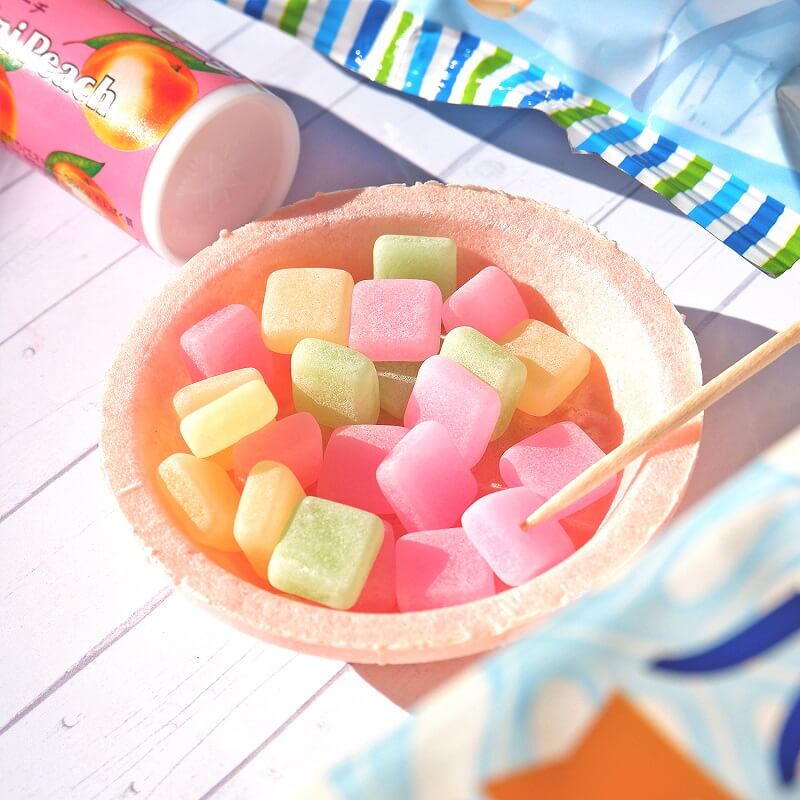
Source: ZenPop
When you think of gummies, you might think of the German brands Haribo and Trolli, but they are also big business in Japan! Hundreds, if not thousands of varieties are available and novelties hit the shelves every month! Hard gummies, soft gummies, filled gummies or sour gummies: there will always be a type and flavor that you’ll enjoy! Worried about a sugar high? There are now special collagen candies as well!
8. Hard Candy
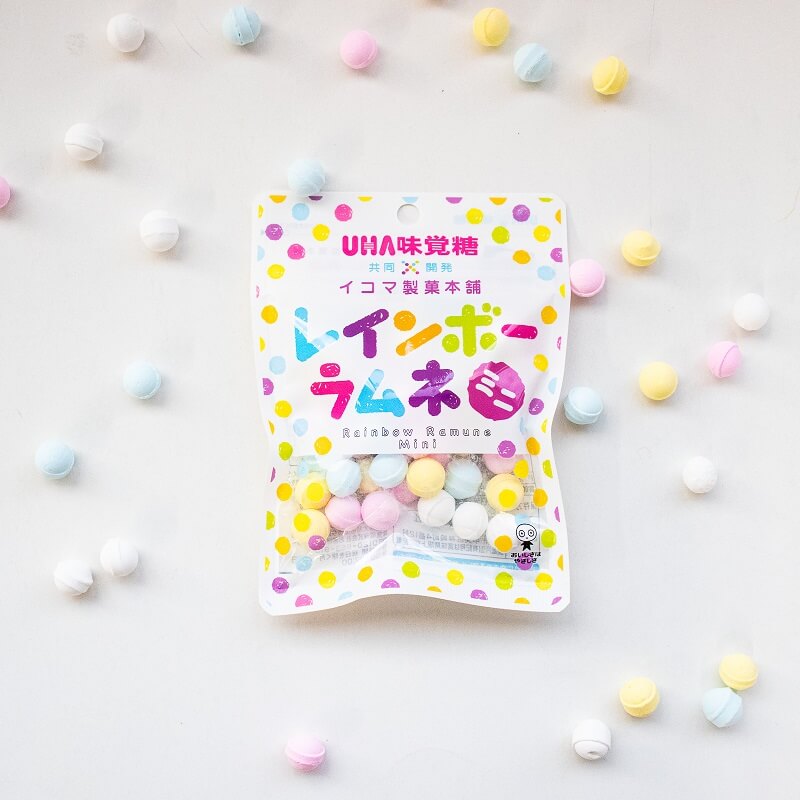
Source: ZenPop
Think Ricola, mints, and all these kinds of enjoyable refreshing breaks. Japan’s got its own fair share. Unlimited flavors, unlimited sizes and unlimited power. It’s especially popular with adults looking to take a quick break from work at the office.
9. Hi-Chews
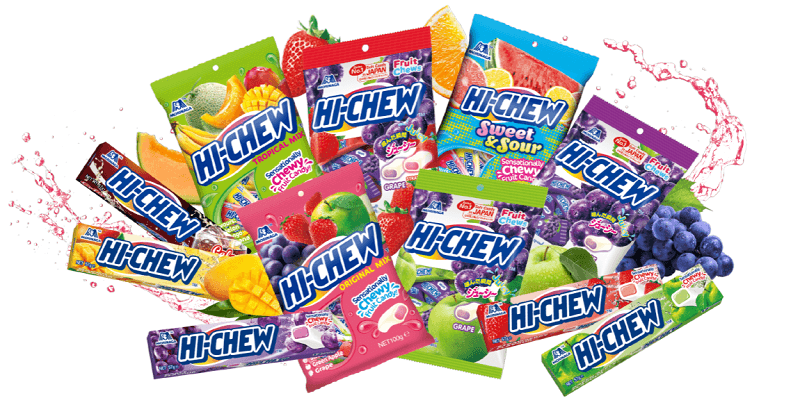
Source: Morinaga
Hi-Chew is a soft chewy candy that was first released in 1975. Technically, it was first called “Chewlets” and released in 1931. Companies tried to make something similar to gum, without having to dispose of it after! It’s very rude in Japan to take food out of your mouth and throw it away.
Ever since its inception, Hi-chew has become one of the most famous and best-selling Japanese candies here, and abroad. They even opened an American production branch! Will it surprise you if I say that Hi-chews offer lots of flavors? Probably not.
10. Matcha snacks
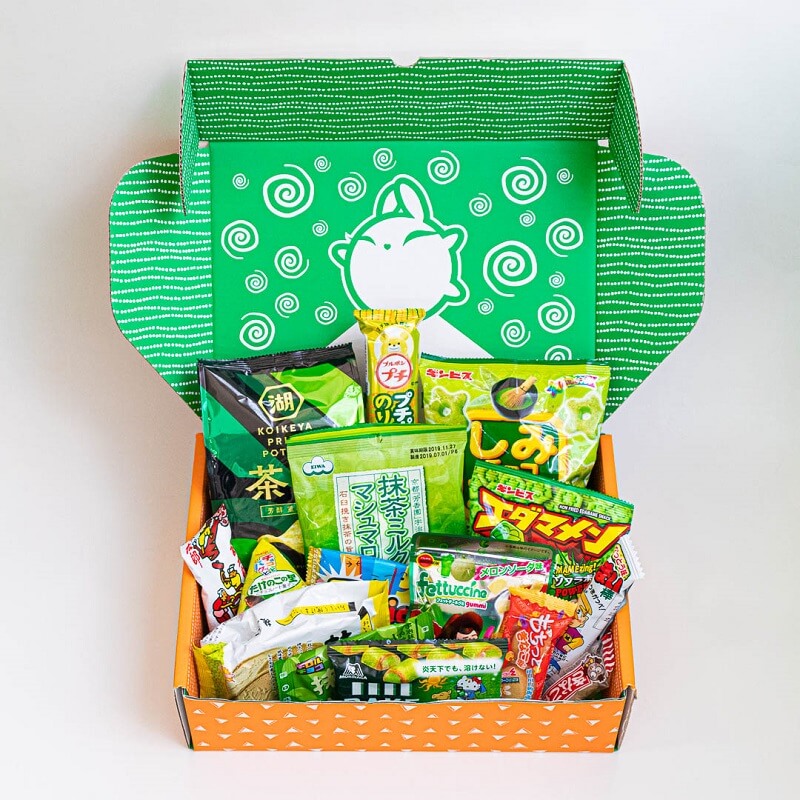
Source: ZenPop Matcha Pack
Do you actually know what matcha is? Yes, it’s green. You’ve seen it on some packaging, and all kinds of Starbucks matcha-flavored items. Is it tea? Yes it is. Matcha, 抹茶, might be one of the most traditional and popular flavors most people would think of when thinking of Japanese tastes.
Matcha is actually a very fine powder made from special tea leaves that grow in the shades.
It is used for a lot of traditional snacks that generations of families have been perfecting over the decades, but also in very popular current treats. You can for example find matcha-flavored KitKats or Pocky!
11. Sakura snacks
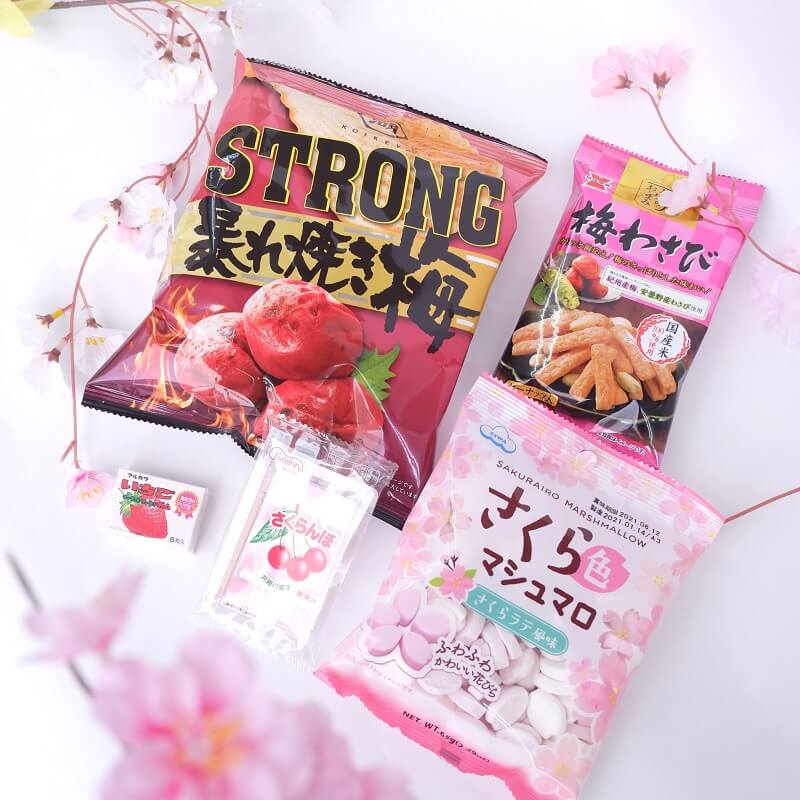
Source: ZenPop
Sakura snacks are very seasonal. They hit the shelves a few weeks before the cherry blossoms bloom, and disappear shortly after the petals have left the trees. That’s what makes them so special! It can be frustrating because they do taste very good, and out of season, it’s nearly impossible to find any.
Just like matcha snacks, all kinds of local pastries and biscuits use the flavor and image for product branding.
12. Chips
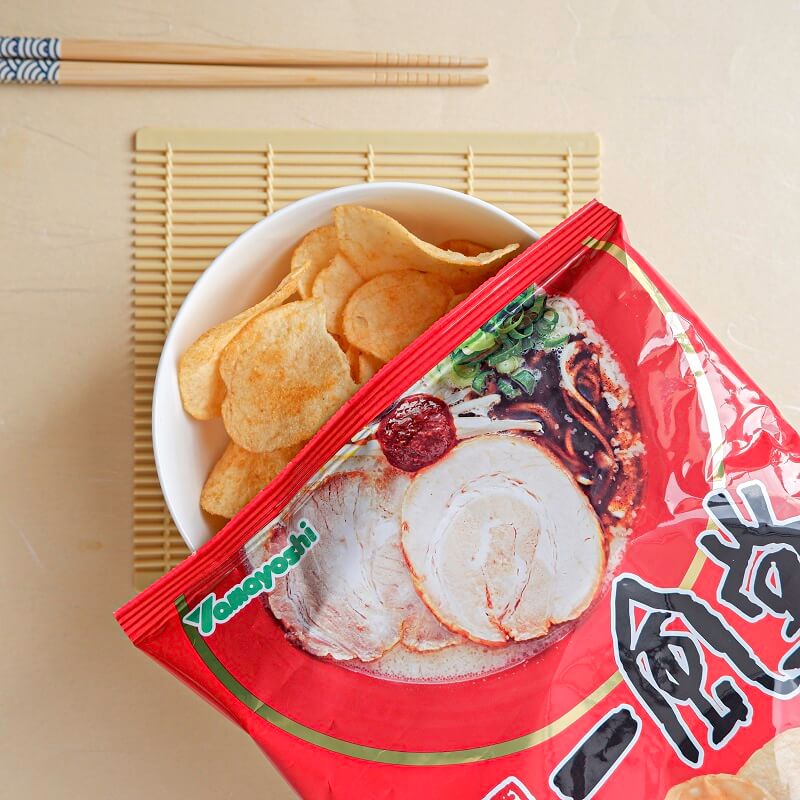
Source: ZenPop
You know your Pringles, Lay’s and Cheetos, but have you heard of ChipStar & Calbee? Japan’s in on the chip game, and if you ask me, they are very good at it. If they were to actually export their products, western companies might have to rethink their strategy!
Japan has a lot of very innovative flavors: yuzu & wasabi, or chocolate covered chips for when you can’t decide whether to eat salty or sweet. Their chips are very crunchy, finely flavored, and have good aroma. Chipstar is also really good at giving you what you pay for, and not a near empty bag of chips!
Away from the classic chips, Japan also has its own chip-like snack, such as Jagariko. These potato sticks are somewhat of a classic snack for kids, but it comes with a twist! If you add some hot water, which you can get from the dispenser at the konbini where you purchased them, and wait a couple of minutes just like for instant noodles, you get… mashed potatoes! From crunchy to savory in a whim. Who thought of that?
13. Chocolate
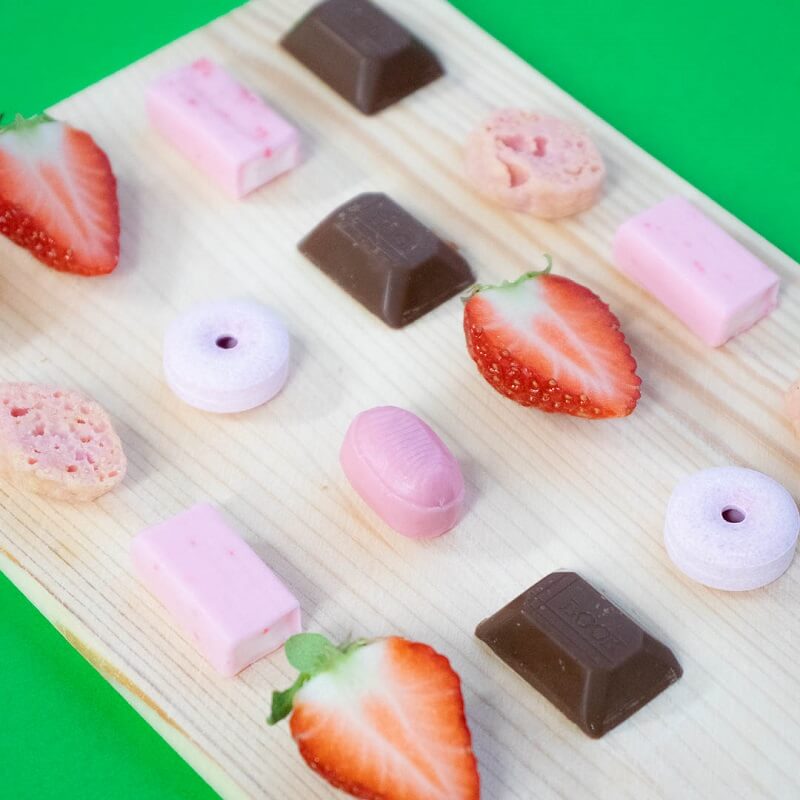
Source: ZenPop
It’s not Swiss, but still damn tasty! Japanese brands such as Morinaga and Meiji are in and on the choco-trend. If there’s one thing Japan is really good at, that is taking good food from overseas, and adapting them to their own taste. They’ve done it with ramen, gyoza, bread, and, well, chocolate. The portions are always just right too, whether they are macadamia nuts covered in delicious Meiji chocolate or strawberry-flavored Morinaga chocolate, they are all just mouth-watering.
14. Cookies and Biscuits
Source: ZenPop
A cookie is just a cookie, but not really, actually. To tell you the truth, Country Ma’am’s cookies are just so close to perfection. A crunchy outside wrapped around a soft dough with just enough chocolate to leave you wanting more. Unless you go for the full double chocolate cookies, in which case, you’ll be served.
Biscuits are super popular in Japan, and a very common gift to bring back from different prefectures when away on travel. Easy to carry around, endless variations: everyone can find their guilty pleasure.
15. Senbei
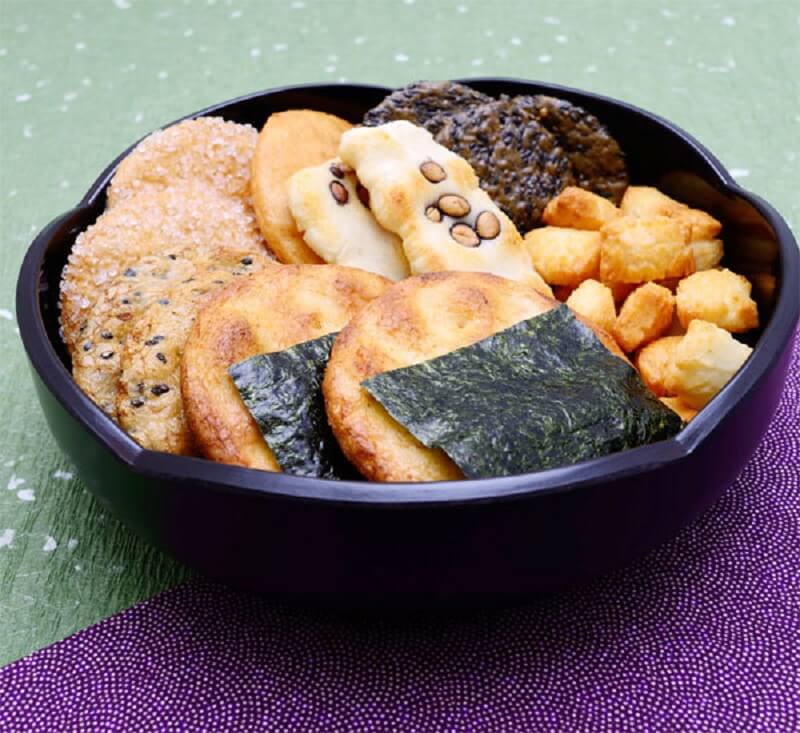
Source: Japan centre
A simple rice cracker. You can find them in all shapes and sizes: some to be eaten in a bite, others that could nearly go for a meal.
Senbei are a very traditional snack, and historical records list the first mention of the word senbei around the year 737. More than a millennia in the making!
The most common one are basic sea-flavored senbei, but they are also often covered in nori (seaweed) and sweet variations are also available!
Kaki no Tane for example, coming from Niigata prefecture, are some of the most classic senbei on the market, often mixed with peanuts, and served as a bar snack!
16. Gum
Source: ZenPop
This is something where room for innovation is quite limited. Japanese companies too, prefer to stick with the basics, but offer a wide range of flavors. You can find some mint flavored ones, but also plum, soda, and all possible fruits that will cross your mind, even kaki, the Japanese fruit!
For the more adventurous among you, sour versions also exist, and are sure to make your hair rise on the first bite. Some gums come in different shapes, such as long string-like gums, but for the most part, no surprises here.
Now you know! This guide provided you with some more details about the world of Japanese snacks, and especially those that you are likely to find in our boxes. Look no further, and check out this month’s Sweet box right here! If you want even more savory things, take a look at our Ramen & Sweets mix box!
Follow us on Facebook, Instagram, and Twitter at zenpopjapan for more news straight from Osaka!

